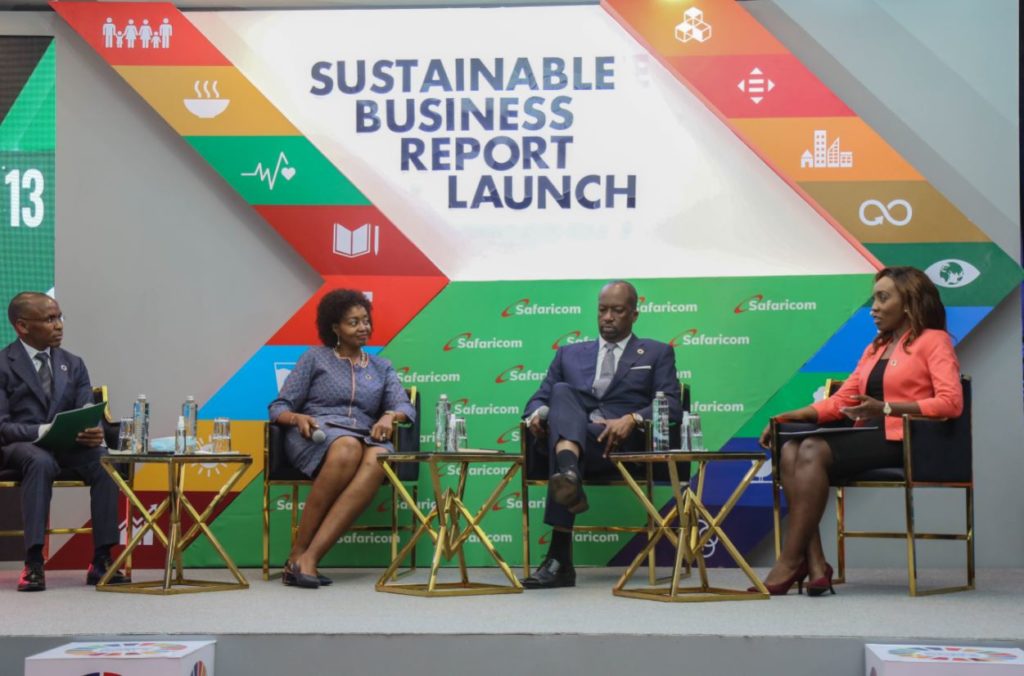From left, Safaricom PLC CEO Peter Ndegwa Melvin Marsh International CEO Flora Mutahi and Nairobi Securities Exchange chairman Kiprono Kittony on a panel discussion during the Safaricom PLC 2020 Sustainability report launch at Michael Joseph Centre in Nairobi today. Safaricom held its Sustainable Business Report today. The meeting is its 9th and focused on a theme Resilience Through Transition as the carrier reported its focus on embracing ideals for sustainable business.
The transition element is primarily key because Safaricom has seen far-reaching leadership shifts with a new CEO , and soon, a new Chairman .
That aside, the carrier has reported some key statistics, all on an upward trajectory.
The company now served 35.6 million customers, which is 11.9% higher than what it reported last year.
The operator’s primary money maker, M-PESA now has 24.9 million customers, a 10 percent rise from last year.
Another key product, data, has also grown significantly year on year. Now, 22 million customers use Safaricom mobile data, which is an impressive feat by any metrics. More and more people have been adopting a digital lifestyle using smart devices. The carrier has since reported that its LTE services are accessible in all urban centres in the country. Other perks include the introduction of non-expiry bundles that has been received well by customers, albeit pressure from users.
Less than two years ago, Safaricom introduced an overdraft facility called Fuliza . The product has since demonstrated its popularity. The carrier says that it now processes 5.73 overdrafts per second.
In terms of infrastructure, the Sustainable Report has some interesting numbers.
First, about 77% of the Kenya population is reported covered by 4G. 94% of the population has access to 3G.
Safaricom Home Fibre, which is at the top of the broadband game, is now serving 142K homes.
And oh, there are 15 million smartphones in the Safaricom network. Peter Ndegwa, CEO, Safaricom Our theme highlights how we faced significant disruption during the year, but the fundamentals of the business proved to be resilient and strong. Against the backdrop of the continued disruption we face in the telecommunications industry, we also had to contend with the impact of the COVID-19 pandemic during the later stages of the year.
